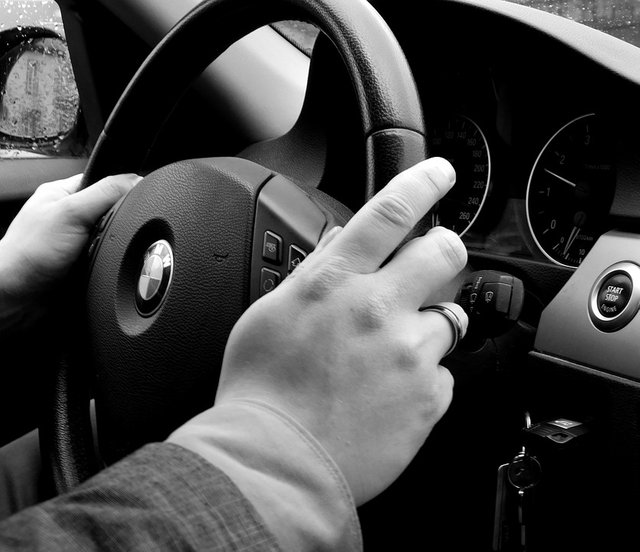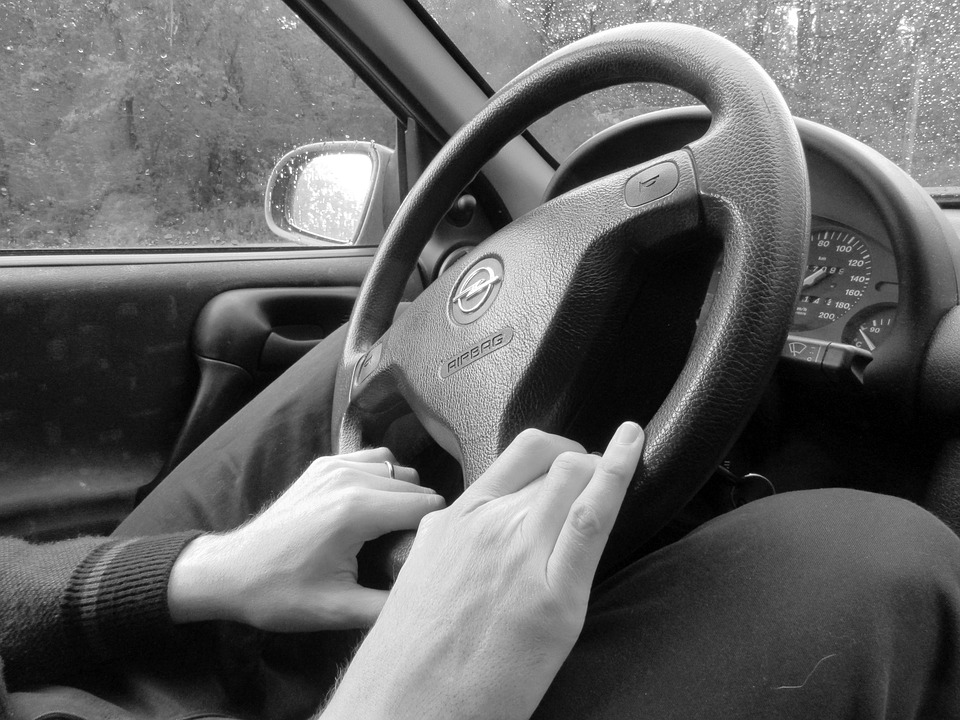[Ita/eng] Guidare meglio e in sicurezza/Drive better and safely

Prendendo spunto dalla mia passione per i motori e la guida, dalle varie guide lette e dalle prove su strada voglio condividere con voi qualche consiglio sulla guida da appassionato amatore(non da esperto).

Giornalmente in città, esattamente come in pista, è importante non aggiungere al rischio non dipendente da noi stessi rischi consapevoli, quindi la prima regola è rimanere sempre concentrati per renderci conto di ciò che ci circonda e anticipare il pericolo.
La differenza tra un pilota ed un automobilista risiede principalmente nell'esercizio di affinamento della tecnica che esegue il primo. Se la dote naturale che permette all'individuo di eccellere in uno sport è una caratteristica innata e quindi non assimilabile tramite corsi, studi e allenamento lo stesso non si può dire delle conoscenze di base come:
- La giusta posizione delle mani sul volante
- Una buona posizione di guida
- L'utilizzo corretto del cambio e del freno
- Sapere come impostare una curva e come comportarsi durante la percorrenza
- Conoscere le caratteristiche del veicolo che si guida
- Saper reagire all'imprevisto superando i limiti oggettivi dell'auto
Innanzitutto dimenticate il detto "chi va piano, va sano e va lontano", prudenza e bassa velocità non hanno niente in comune e un eccesso di queste potrebbe solo creare intralcio al traffico e per assurdo diventare anche pericoloso, in strada infatti non siamo soli e la reazione di chi ci circonda potrebbe mettere in pericolo noi e gli altri automobilisti.
Importante è anche la messa a punto dell'auto, fatta periodicamente da meccanici competenti che sappiano consigliarvi i giusti prodotti e le necessarie riparazioni con onestà.

Seguendo l'elenco voglio iniziare questa serie di consigli parlando della giusta posizione delle mani sul volante.
Pollici sulle razze e mani a ore 9 e 15 sono i due comandamenti per quanto riguarda l'impugnatura del volante, nel caso il volante non avesse un telaio (razze) dove appoggiare i pollici è importante rispettare l'impugnatura a ore 9 e 15.
Tenendo le mani in questa posizione è possibile affrontare praticamente l'80% delle curve su strade extra-urbane senza mai lasciare lo sterzo.
E' importante mantenere le mani in questa posizione perché essa garantisce sensibilità, controllo oltre che velocità di azione e reazione.
Per quanto comodo possa sembrare, muovere spesso le mani sullo sterzo significa perdere maggior tempo, perdere feeling a causa di una diversa impugnazione e nei casi più gravi impossibilità di reagire ad un imprevisto.
Se tutto questo potrebbe sembrare assurdo, come potrebbe sembrare assurdo l'incredibile rischio che causa inviare un attimo un messaggio o utilizzare le mani per fare altro alla guida, basta la matematica per confermare i pericoli a cui si va incontro.
A 100Km/h percorriamo 2,7 metri ogni decimo di secondo, quindi ogni distrazione anche brevissima ci fa perdere l'attenzione su decine di metri di strada. Se poi immaginiamo di distrarci in una curva per soli 3 decimi di secondo, anche ampia come quelle autostradali, saremo già 8 metri più a destra o sinistra quindi contro il muro, nell'altra corsia o peggio su un altra auto. Non c'è bisogno che faccia un esempio su cosa succeda se mentre siamo distratti l'auto perda aderenza, buchi una gomma o accada qualche altro imprevisto.
Misure tanto piccole e reazioni tanto veloci aiutano a comprendere quanto sia utile tenere ben salde le mani sul volante e alta l'attenzione.

Every day in the city, as on the track, it is important not to add to the risk another risk so the first rule is always stay focused to see what surrounds us and anticipate the danger.
The difference between a professional driver and a normal human being is mainly in the exercise of refinement of the technique that the professional performs. The natural dowry that allows the individual to excel in a sport is an innate characteristic and therefore not assimilable through courses, studies and training while the same can not be said of basic knowledge such as:
- The right position of the hands on the steering wheel
- A good driving position
- Proper use of the gearbox and the brake
- Know how to set a curve and how to behave during the journey
- Know the characteristics of the vehicle that you drive
- Know how to react to the unexpected by overcoming the objective limits of the car
To start forget the saying "who goes slowly, goes healthy and goes far", prudence and low speed have nothing in common and an excess of these could only create an obstacle to traffic and absurd to become dangerous. We are not alone on the street and the reaction of those around us could endanger ourselves and other drivers.
Also important is the tuning of the car, made periodically by competent mechanics who can advise you on the right products and the necessary repairs with honesty.
Following the list I want to start this series of tips talking about the right hand position on the steering wheel.
Inches at mid-steering and hands at 9 o'clock and 15 o'clock are the two commandments regarding the handle of the steering wheel.
Holding your hands in this position (watch first photo) you can face 80% of the curves on extra-urban roads without ever leaving the grip.
It is important to keep your hands in this position because it guarantees sensitivity, control as well as speed of action and reaction.
As comfortable as it may seem, moving your hands often on the steering wheel means losing more time, losing feeling due to a different position and in the most serious cases it is impossible to react to an unexpected event.
This may seem absurd, as it might seem absurd that it is risky to send a message or use your hands to do something else.
In this regard it is good to know that at 100 km/h we cover 2.7 meters every tenth of a second, so every distraction, even very short, makes us lose our attention on dozens of meters of road. If we imagine distracting ourselves in a curve for only 3 tenths of a second we could find 8 meters more to the right or left then against the wall, in the other lane or worse on another car. There is no need to give examples of what happens if, while we are distracted, the car loses grip, holes a rubber or something unexpected happens.
Measures so small and reactions so fast help to understand how useful it is to keep hands clenched on the steering wheel and high attention.
Congratulations @giolino! You have completed some achievement on Steemit and have been rewarded with new badge(s) :
Click on any badge to view your own Board of Honor on SteemitBoard.
To support your work, I also upvoted your post!
For more information about SteemitBoard, click here
If you no longer want to receive notifications, reply to this comment with the word
STOP